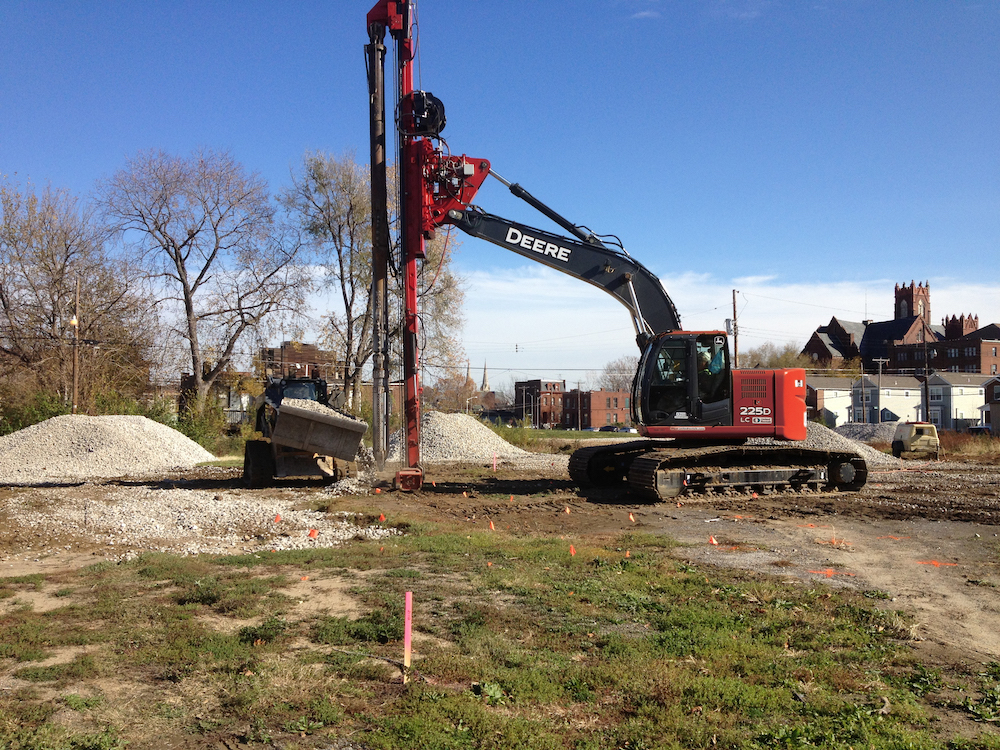Different ground improvement techniques are used to strengthen the soil in a construction area to ready it for a new facility. In recent years, new methods have emerged that offer greater cost efficiency. This is the third article in a series we have published to help you understand ground improvement. In the first, we cover the basics of ground improvement, and in the second, we perform a deep dive into the aggregate pier ground improvement technique. In this article, we provide you an overview of the costs of ground improvement techniques.
Deep foundations: the costly, traditional ground improvement technique
Before the development of aggregate piers, if a shallow foundation could not be supported by the in situ soil, builders had to use deep foundations, such as drilled shafts or driven piles. Deep foundations consist of piers or piles made from timber, steel, reinforced concrete or pre-stressed concrete. These piers or piles are often reinforced with rebar and can either be driven into the ground or drilled. Implementing deep foundations is typically more expensive than using aggregate piers or removing and replacing the marginal soils. If it’s determined that deep foundation work is necessary for a specific building project, the costs associated with deep foundations can actually prevent that building project from being constructed.
Aggregate piers: a more cost-efficient ground improvement technique
Aggregate piers are often the most economical option for constructing in soft soils because of the materials used (stone is cheaper than concrete), the speed of construction (specialty contractors can often install 40 to 60 aggregate piers per day) and the treatment depth. The average depth of an aggregate pier is in the 15-to-20-foot range. Although most companies have the equipment to treat down to 30 feet, and in some cases much deeper, ground improvement becomes much more expensive at greater depths.
Understanding when to use aggregate piers or deep foundations
Aggregate piers can only sustain a certain load, depending on the soil type. In some cases, such as high-rise buildings and other heavily-loaded structures, deep foundation work may be the only option. Few ground improvement contractors perform both aggregate pier work and deep foundation work. A company with knowledge and experience in the design and construction of both can provide engineering support in the early stages of a project to help determine the most feasible and economical foundation solution.
How we deliver ground improvement savings
Since starting our ground improvement division in 2005, Subsurface Constructors has also designed and built custom vibro equipment that allows for more flexibility and efficiency in the mobilization and installation processes. By building our own equipment and parts, we are able to increase our capacity to do work in most areas of the country. At Subsurface Constructors, we pride ourselves on being innovators in construction process improvements and the implementation of emerging technologies.
Learn more about ground improvement techniques and aggregate piers
The article you’ve just read is an excerpt from our white paper: The Desktop Guide to Aggregate Pier Ground Improvement. In the guide, we show you the basics of ground improvement methods and take a deep dive into aggregate pier ground improvement.



